Examining the Effects of Introducing and Combining Electric-Arc Furnace Slag and Ceramic Waste in a Single Self-Consolidating, High-Strength Concrete Mix
Abstract
1. Introduction
2. Materials and Methods
2.1. Selection of Quality Control Tests
2.1.1. Fresh SCC Quality Control Tests
- (1)
- L-Box Test: This test demonstrates the SCC’s flowability through tight sections and restricted reinforcement arrangements. For a sample of concrete to be considered SCC, the ratio H2/H1 (with H2 being measured at the end of the open channel and H1 being measured at the vertical hopper) should preferably be 1.0. However, the standard allows for a minimum ratio of 0.8 [16].
- (2)
- J-Ring Test: This test demonstrates the SCC’s flowability around reinforcements. This test also gives an indication of its workability and exposure to segregation. SCC is defined as having an average slump flow diameter of at least 500 mm, which was used as a cutoff to determine whether the sample of concrete is SCC or not. A difference of 25 mm between the J-Ring flow and slump flow test results is acceptable [17].
- (3)
- V-Funnel Test: This test was used to get an idea of the SCC’s viscosity. The SCC’s viscosity was measured immediately after placing it in the V-Funnel and after leaving it in the V-Funnel for 5 min. The timings of the two iterations are then compared [18].
2.1.2. Measurement of Compressive Strength
2.2. Use of Ceramic Waste
2.3. Use of EAFS
2.4. Benchmark SCC Mix
3. Results and Discussion
3.1. Effects of Ceramic Additives
3.1.1. Rheological Properties
3.1.2. Compressive Strength
3.2. Effects of EAFS
3.2.1. Rheological Properties
3.2.2. Compressive Strength
3.3. Development of Hybrid Mixes
3.3.1. Rheological Properties
3.3.2. Compressive Strength
4. Conclusions
Author Contributions
Funding
Acknowledgments
Conflicts of Interest
References
- Medina, C.; De Rojas, M.S.; Frías, M.; De Rojas, M.I.S. Reuse of sanitary ceramic wastes as coarse aggregate in eco-efficient concretes. Cem. Concr. Compos. 2012, 34, 48–54. [Google Scholar] [CrossRef]
- Halicka, A.; Ogrodnik, P.; Zegardlo, B. Using ceramic sanitary ware waste as concrete aggregate. Constr. Build. Mater. 2013, 48, 295–305. [Google Scholar] [CrossRef]
- Skaf, M.; Manso, J.; Aragón, A.; Fuente-Alonso, J.A.; Ortega-López, V. EAF slag in asphalt mixes: A brief review of its possible re-use. Resour. Conserv. Recycl. 2017, 120, 176–185. [Google Scholar] [CrossRef]
- Australasian (Iron & Steel) Slag Association. Electric Arc Furnace Slag. Available online: http://www.asa-inc.org.au/products/electric-arc-furnace-slag (accessed on 31 July 2019).
- Valdés, A.J.; Martínez, C.M.; Guerra-Romero, M.I.; García, B.L.; Del Pozo, J.M.; Vegas, A.T. Re-use of construction and demolition residues and industrial wastes for the elaboration or recycled eco-efficient concretes. Span. J. Agric. Res. 2010, 8, 25. [Google Scholar] [CrossRef]
- Anderson, D.J.; Smith, S.T.; Au, F.T. Mechanical properties of concrete utilising waste ceramic as coarse aggregate. Constr. Build. Mater. 2016, 117, 20–28. [Google Scholar] [CrossRef]
- Senthamarai, R.; Manoharan, P.D. Concrete with ceramic waste aggregate. Cem. Concr. Compos. 2005, 27, 910–913. [Google Scholar] [CrossRef]
- Dhir, R.K.; de Brito, J.; Silva, R.V.; Lye, C.Q. Woodhead Publishing Series in Civil and Structural Engineering. In Sustainable Construction Materials: Recycled Aggregates; Woodhead Publishing: Kidlington, UK, 2019. [Google Scholar] [CrossRef]
- Arulsivanantham, P.; Gokulan, R. A Review on Self Compacting Concrete. Int. J. ChemTech Res. 2017, 10–11, 62–68. Available online: http://sphinxsai.com/2017/ch_vol10_no11/1/(62-68)V10N11CT.pdf (accessed on 10 October 2019).
- Sosa, I.; Thomas, C.; Polanco, J.A.; Setién, J.; Tamayo, P. High Performance Self-Compacting Concrete with Electric Arc Furnace Slag Aggregate and Cupola Slag Powder. Appl. Sci. 2020, 10, 773. [Google Scholar] [CrossRef]
- Tamayo, P.; Pacheco, J.; Thomas, C.; De Brito, J.; Rico, J. Mechanical and durability properties of concrete with coarse recycled aggregate produced with electric arc furnace slag concrete. Appl. Sci. 2020, 10, 216. [Google Scholar] [CrossRef]
- Abu-Eishah, S.I.; El-Dieb, A.S.; Bedir, M.S. Performance of concrete mixtures made with electric arc furnace (EAF) steel slag aggregate produced in the Arabian Gulf region. Constr. Build. Mater. 2012, 34, 249–256. [Google Scholar] [CrossRef]
- Awoyera, P.O.; Ndambuki, J.M.; Akinmusuru, J.O.; Omole, D. Characterization of ceramic waste aggregate concrete. HBRC J. 2018, 14, 282–287. [Google Scholar] [CrossRef]
- De Schutter, G.; Bartos, P.; Domone, P.; Gibbs, J.; Gibbs, R. Self-Compacting Concrete; CRC Press: Caithness, UK; Taylor & Francis Group: Boca Roton, FL, USA, 2008; pp. 3–11. ISBN 978-1904445-30-2. [Google Scholar]
- Goal 11: Sustainable Development Knowledge Platform. 2020. Sustainabledevelopment.Un.Org. Available online: https://sustainabledevelopment.un.org/sdg11 (accessed on 2 January 2020).
- British Standards Institution. BS EN 12350-10:2010: Testing Fresh Concrete. Self-Compacting Concrete. L Box Test. 1998. Available online: http://www.standardsuk.com (accessed on 31 July 2019).
- ASTM C1621/C1621M-17. Standard Test Method for Passing Ability of Self-Consolidating Concrete by J-Ring; ASTM International: West Conshohocken, PA, USA, 2017. [Google Scholar] [CrossRef]
- British Standards Institution. BS EN 12350-9:2010: Testing Fresh Concrete. Self-Compacting Concrete. V Funnel Test. 1998. Available online: http://www.standardsuk.com (accessed on 31 July 2019).
- ASTM C1231/C1231M-15. Standard Practice for Use of Unbonded Caps in Determination of Compressive Strength of Hardened Cylindrical Concrete Specimens; ASTM International: West Conshohocken, PA, USA, 2015. [Google Scholar] [CrossRef]
- ASTM C617/C617M-15. Standard Practice for Capping Cylindrical Concrete Specimens; ASTM International: West Conshohocken, PA, USA, 2015. [Google Scholar] [CrossRef]
- ASTM C127/C127M-15. Standard Test Method for Relative Density (Specific Gravity) and Absorption of Coarse Aggregate; ASTM International: West Conshohocken, PA, USA, 2015. [Google Scholar] [CrossRef]
- ASTM C128/C128M-15. Standard Test Method for Relative Density (Specific Gravity) and Absorption of Fine Aggregate; ASTM International: West Conshohocken, PA, USA, 2015. [Google Scholar] [CrossRef]
- ASTM C184-94e1. Standard Test Method for Fineness of Hydraulic Cement by the 150-μm (No. 100) and 75-μm (No. 200) Sieves; ASTM International: West Conshohocken, PA, USA, 1994. [Google Scholar] [CrossRef]
- ASTM C1240-20. Standard Specification for Silica Fume Used in Cementitious Mixtures; ASTM International: West Conshohocken, PA, USA, 2020. [Google Scholar] [CrossRef]
- ASTM C109/C109M-16a. Standard Test Method for Compressive Strength of Hydraulic Cement Mortars (Using 2-in. or [50-mm] Cube Specimens); ASTM International: West Conshohocken, PA, USA, 2016. [Google Scholar] [CrossRef]
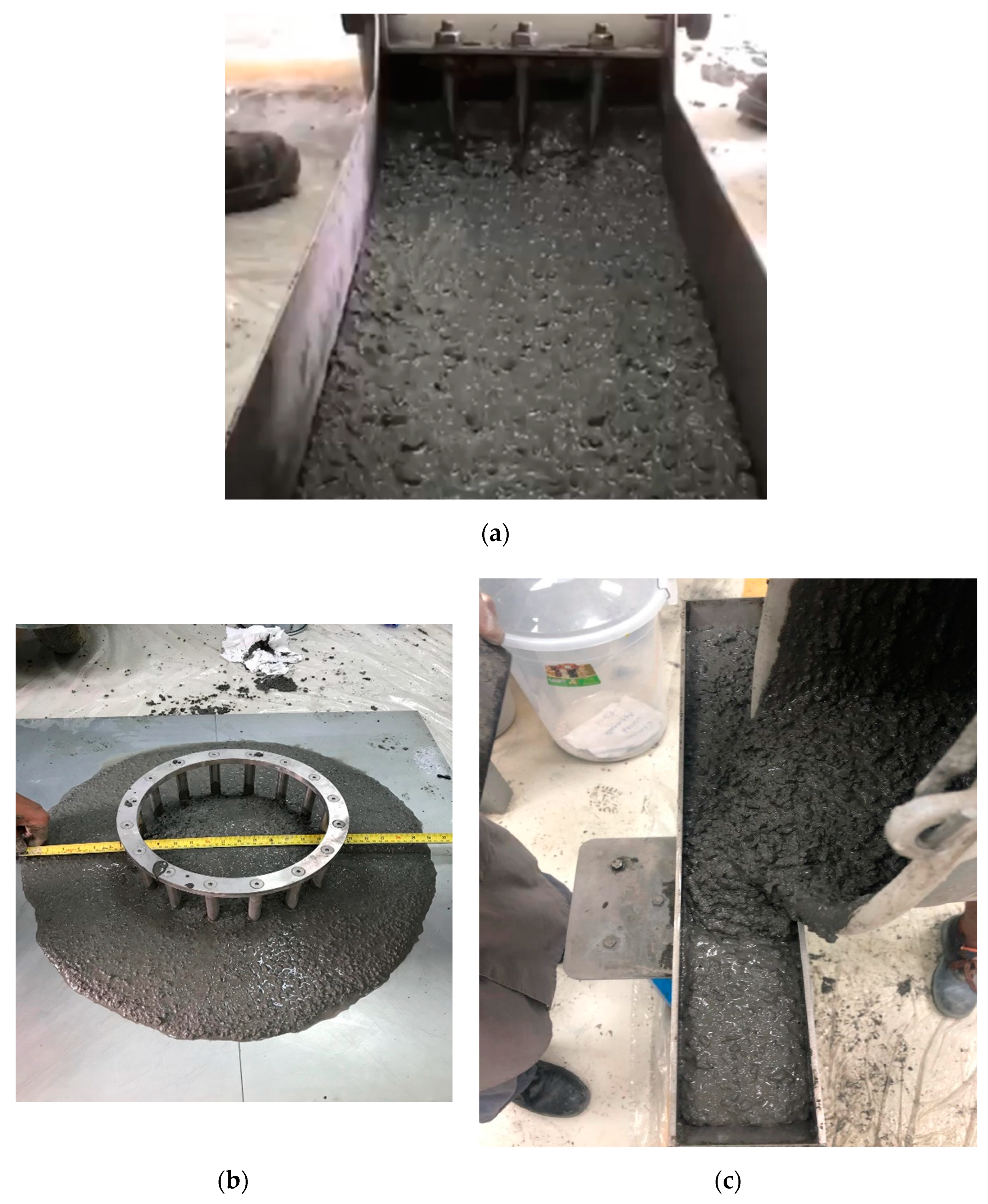
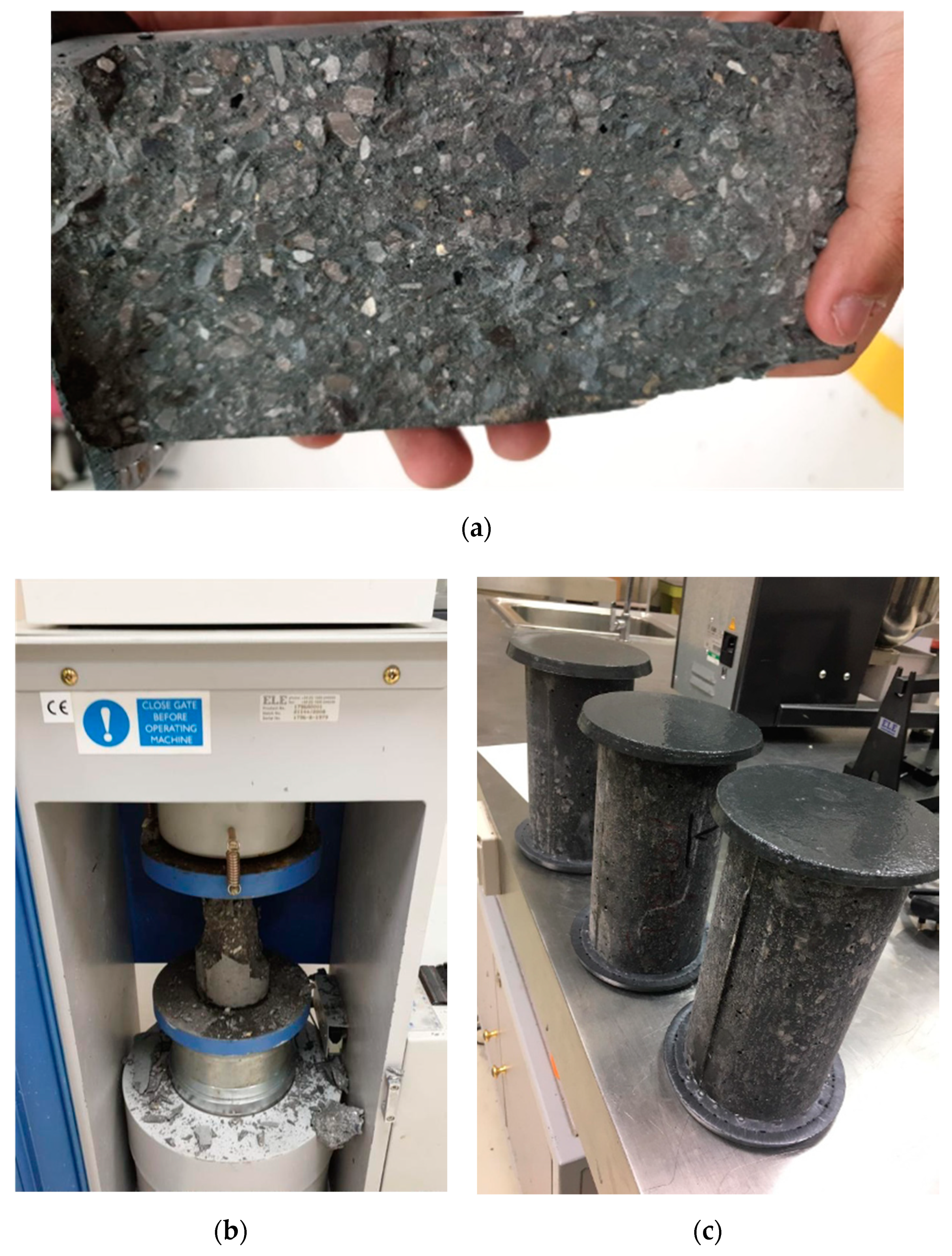
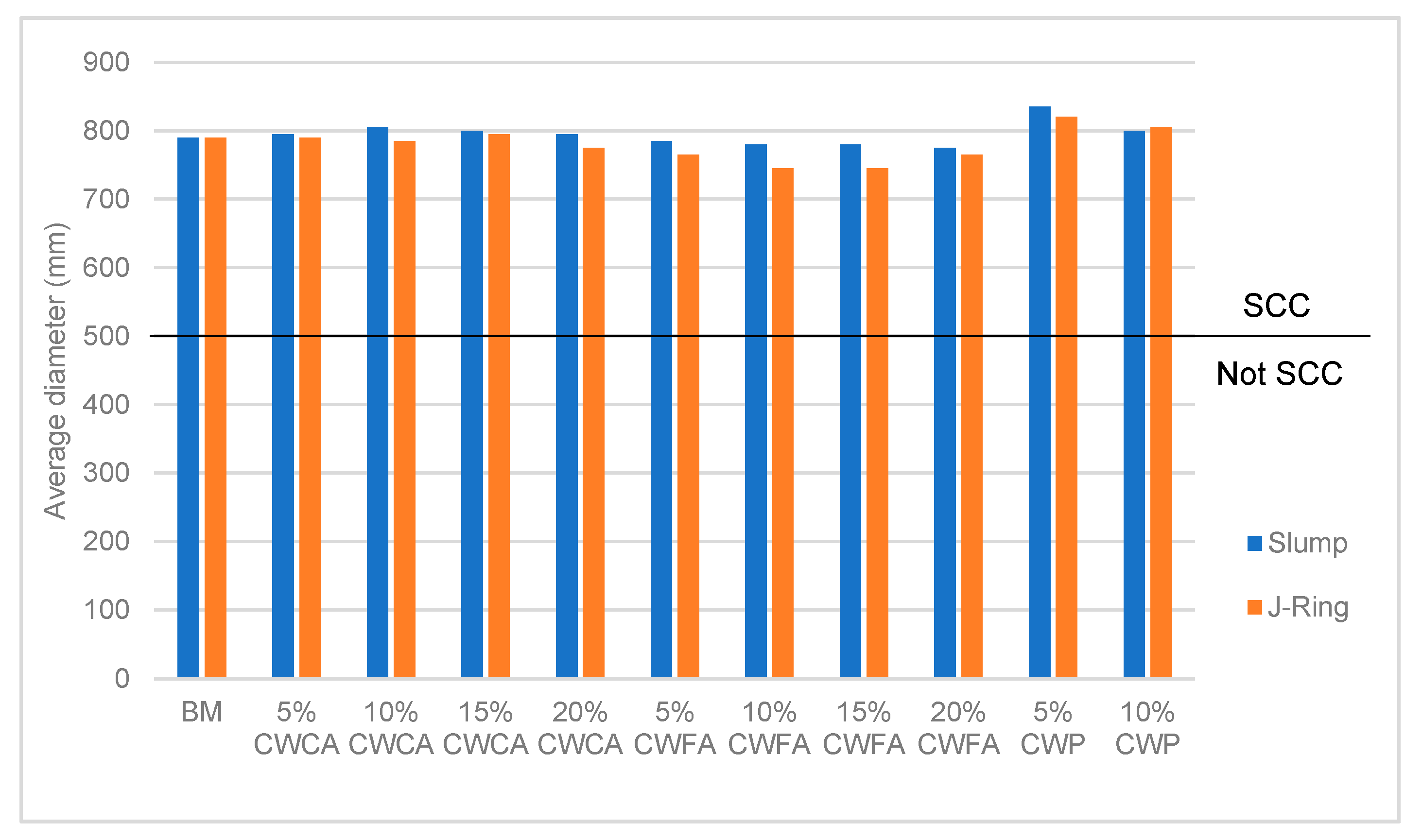

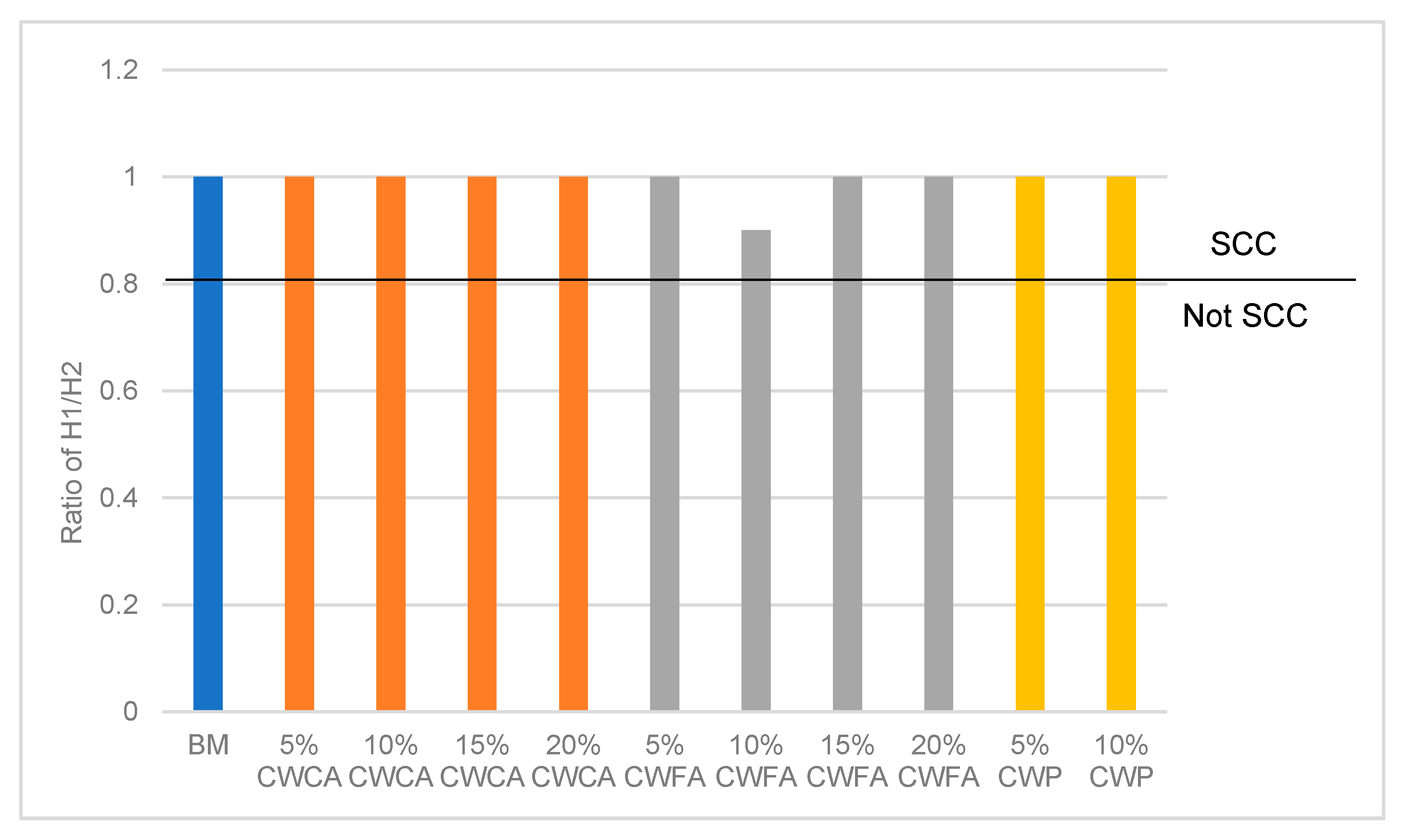
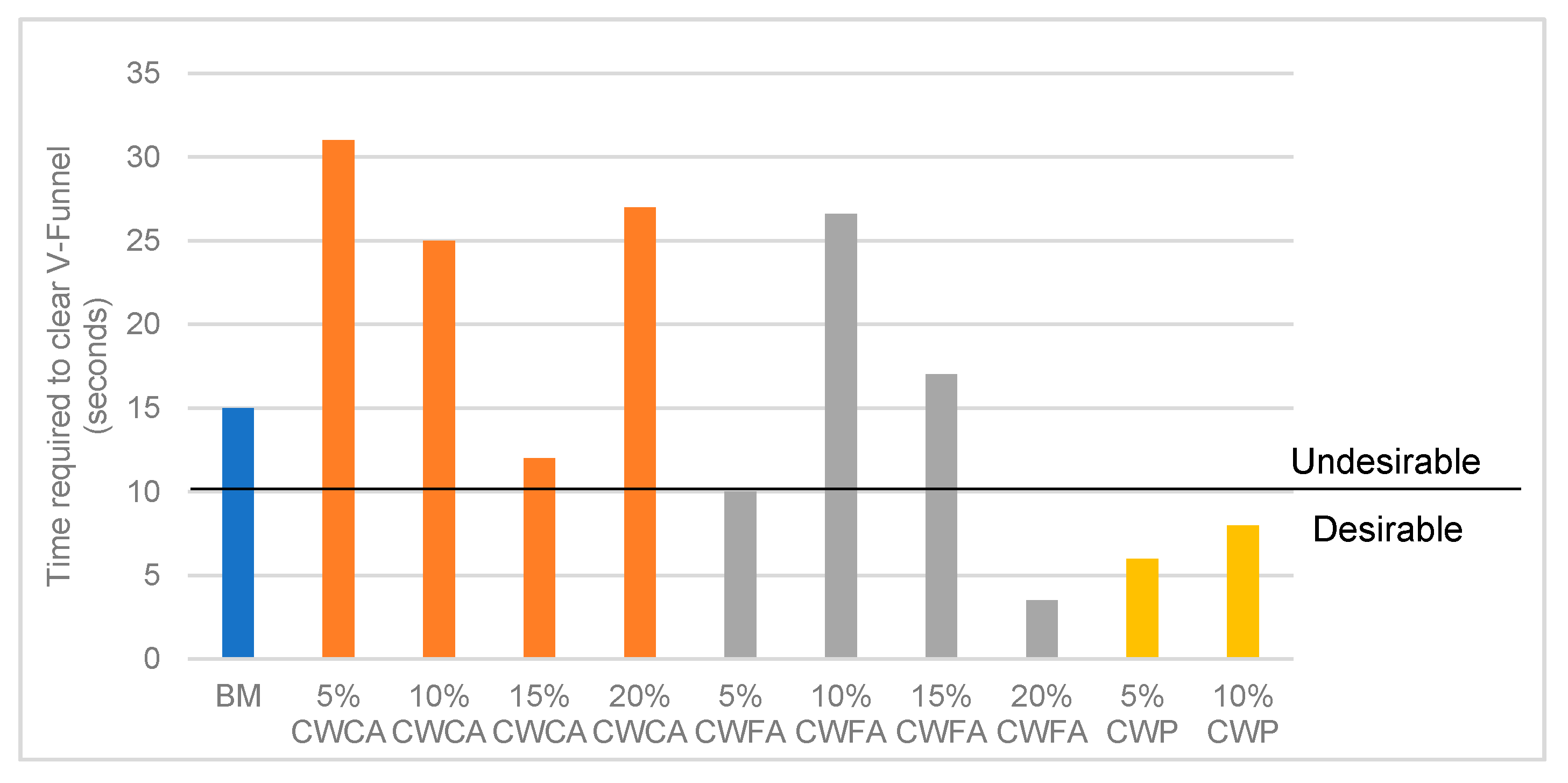
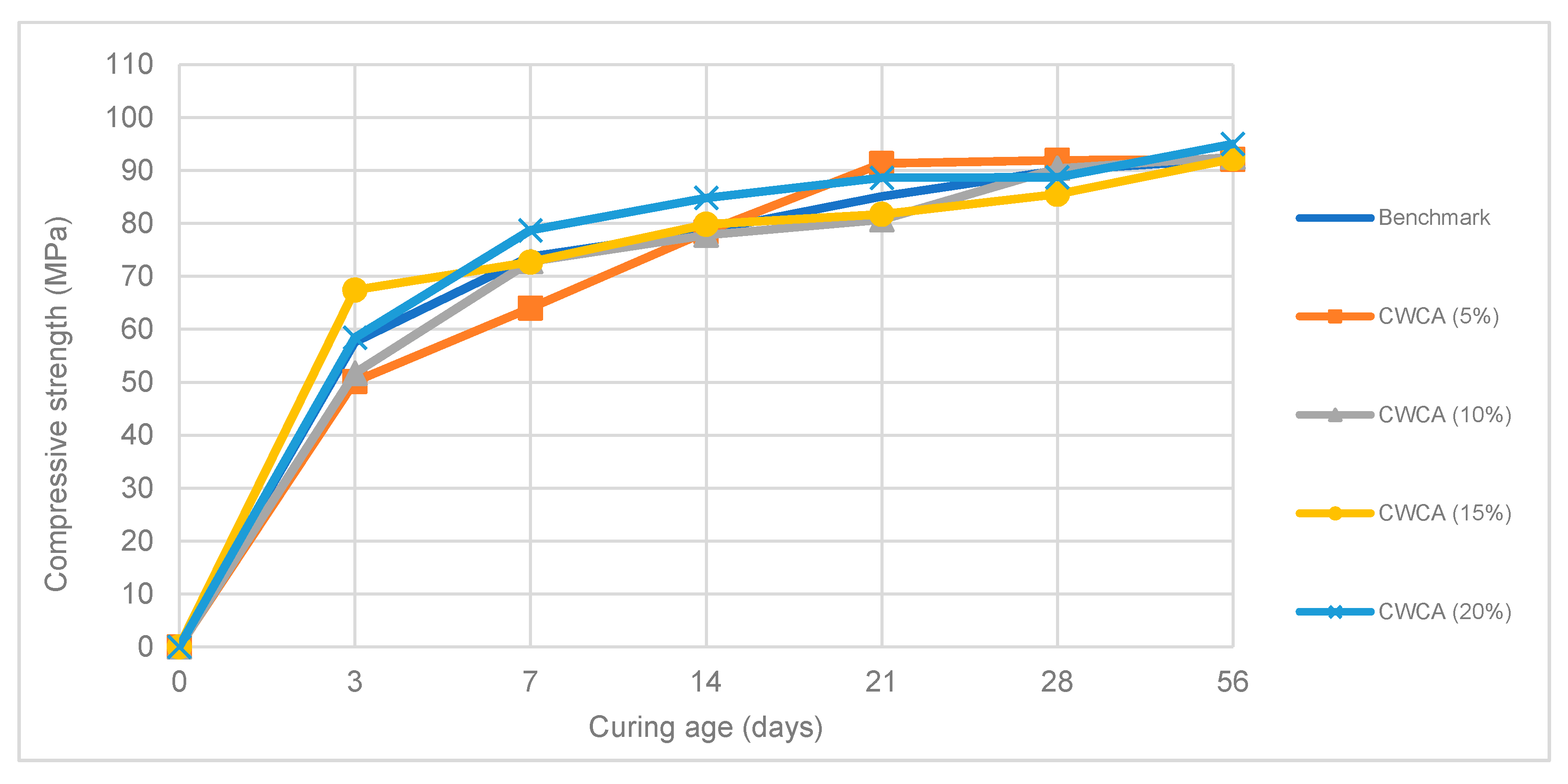
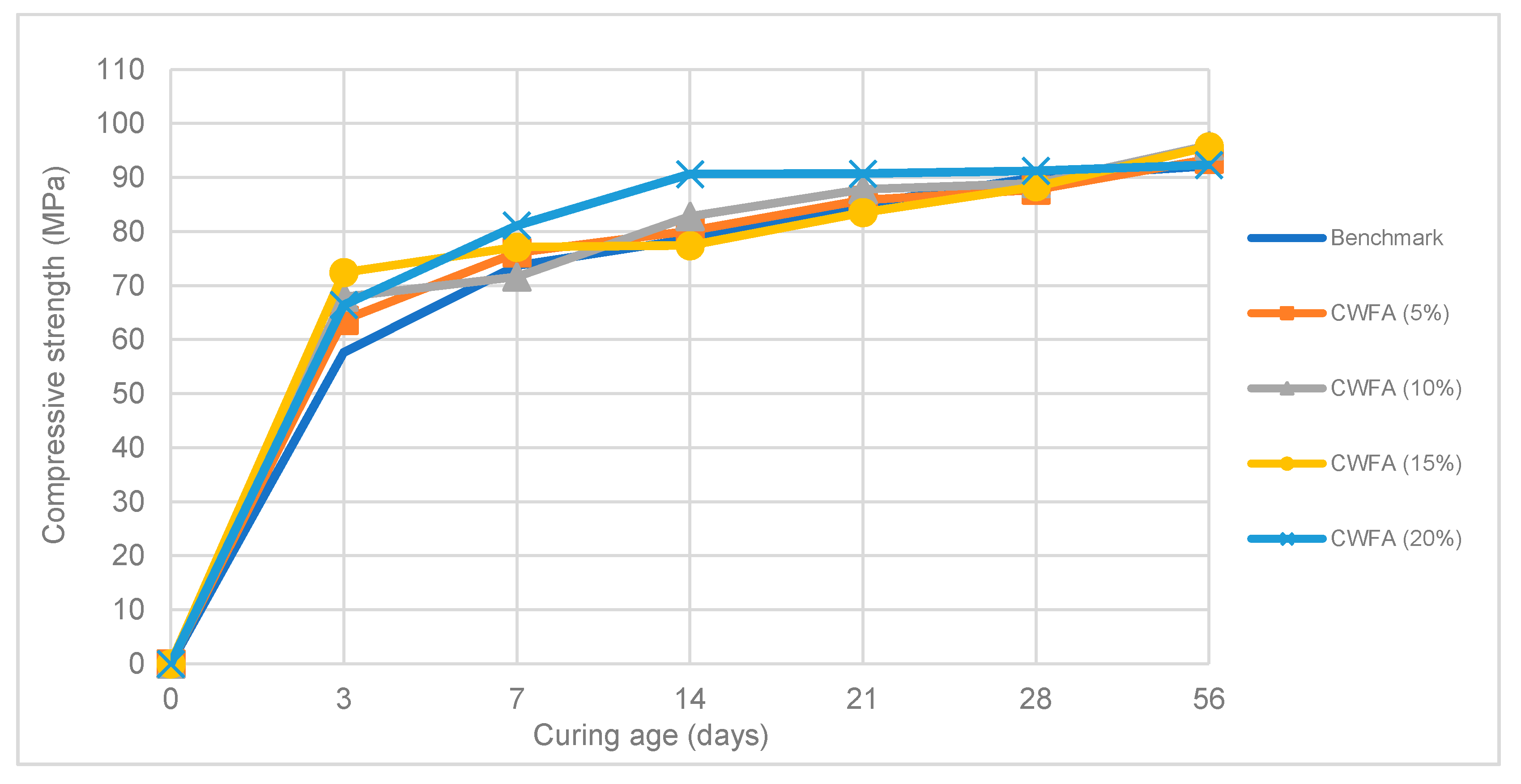
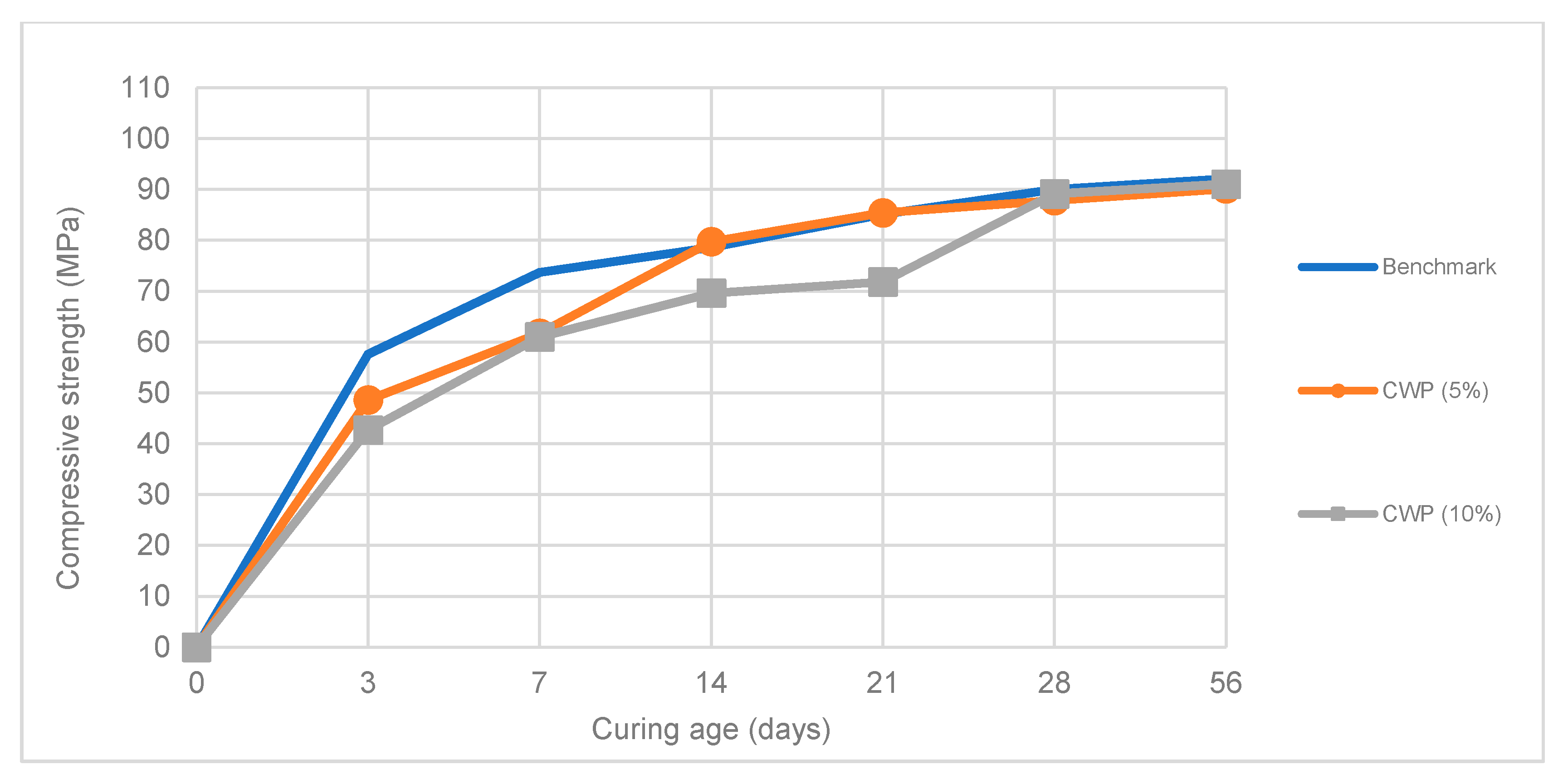
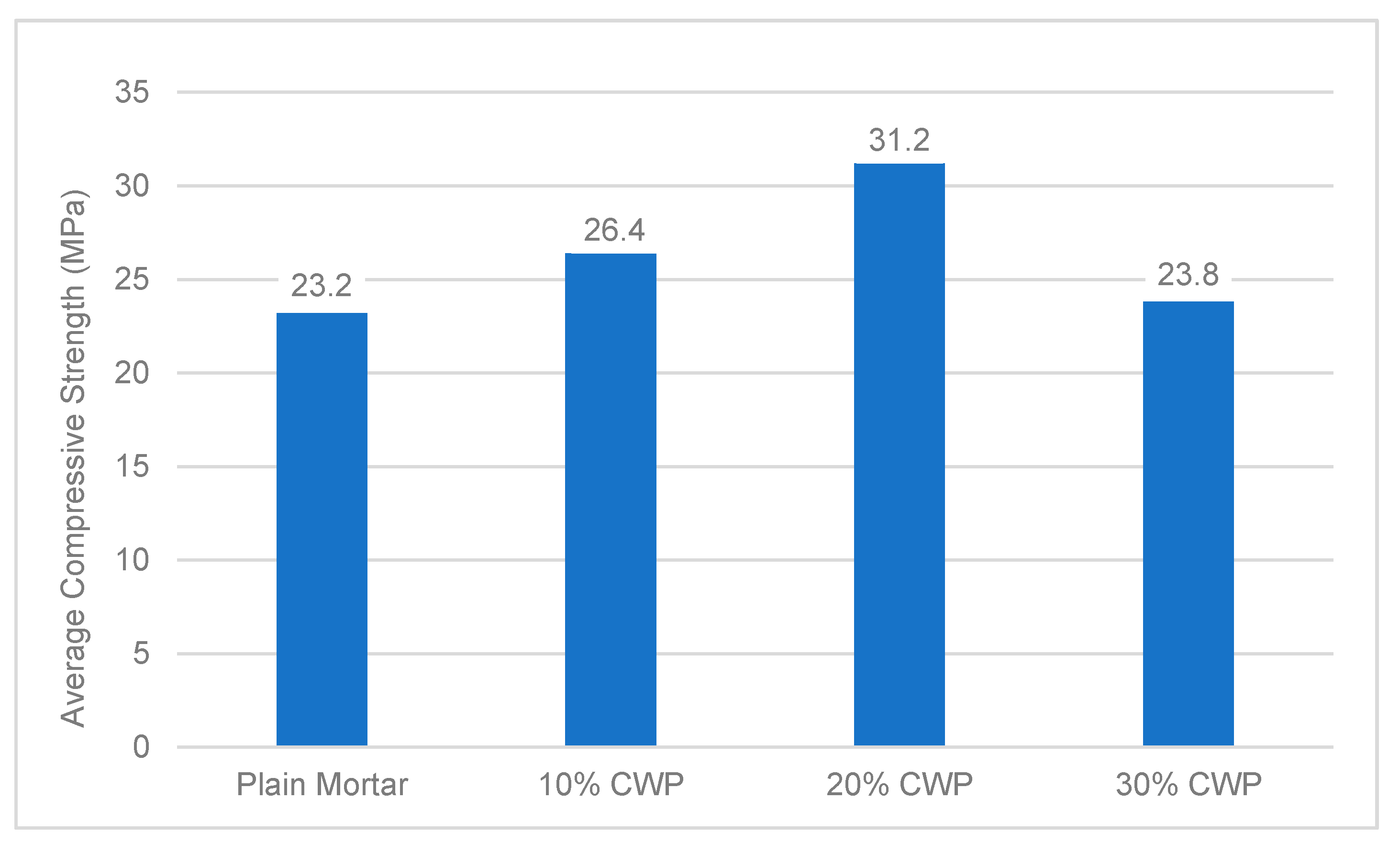

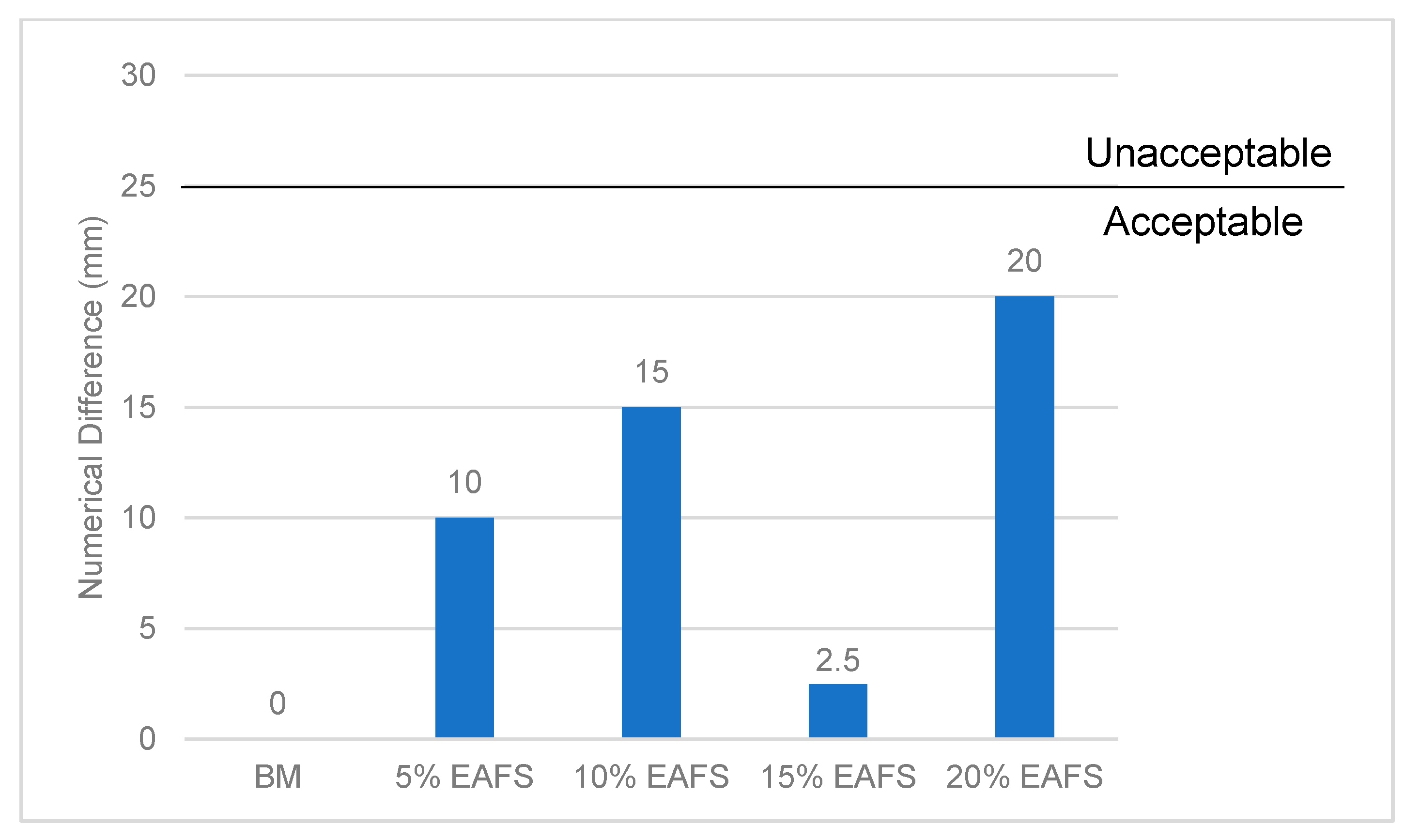
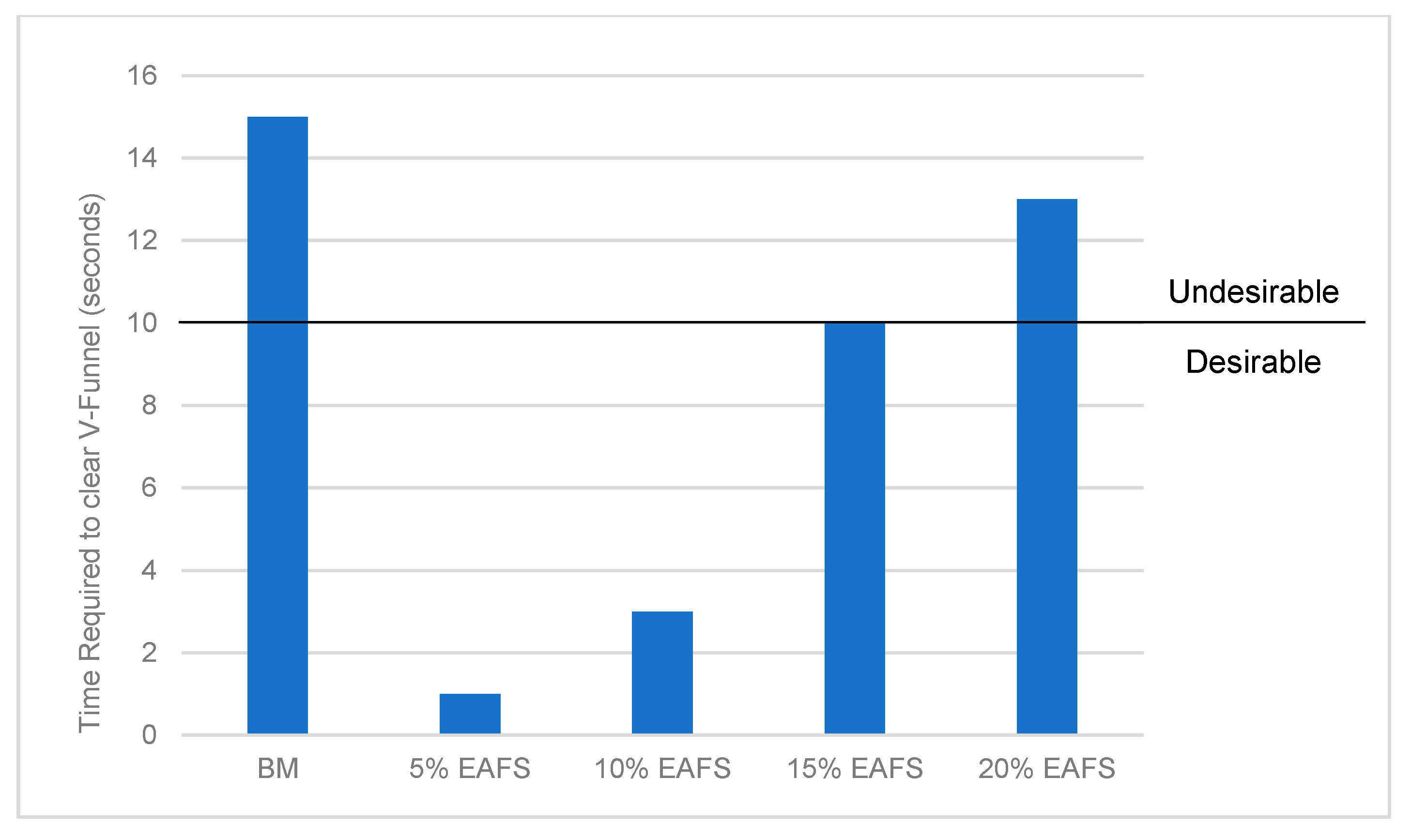
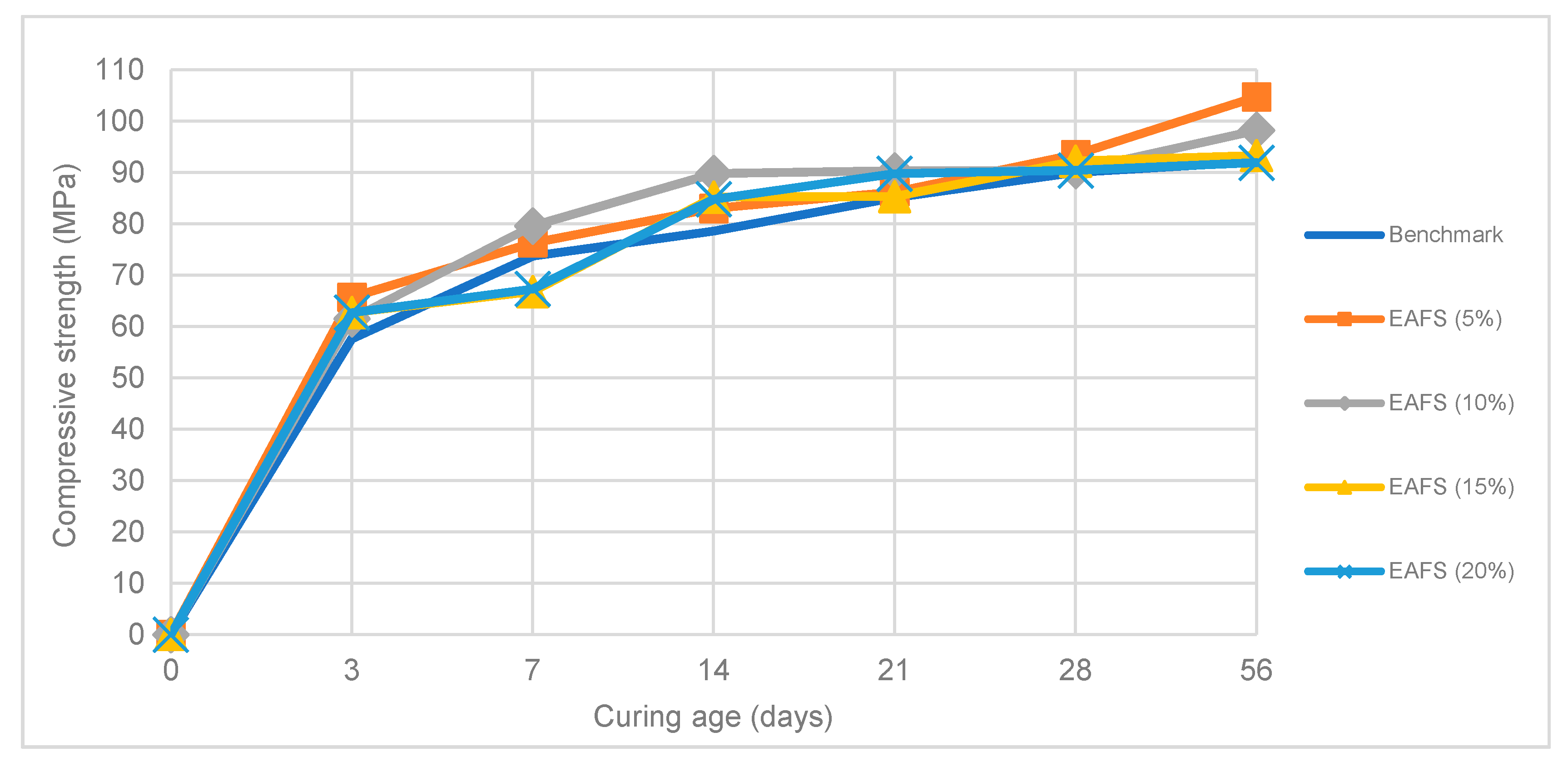
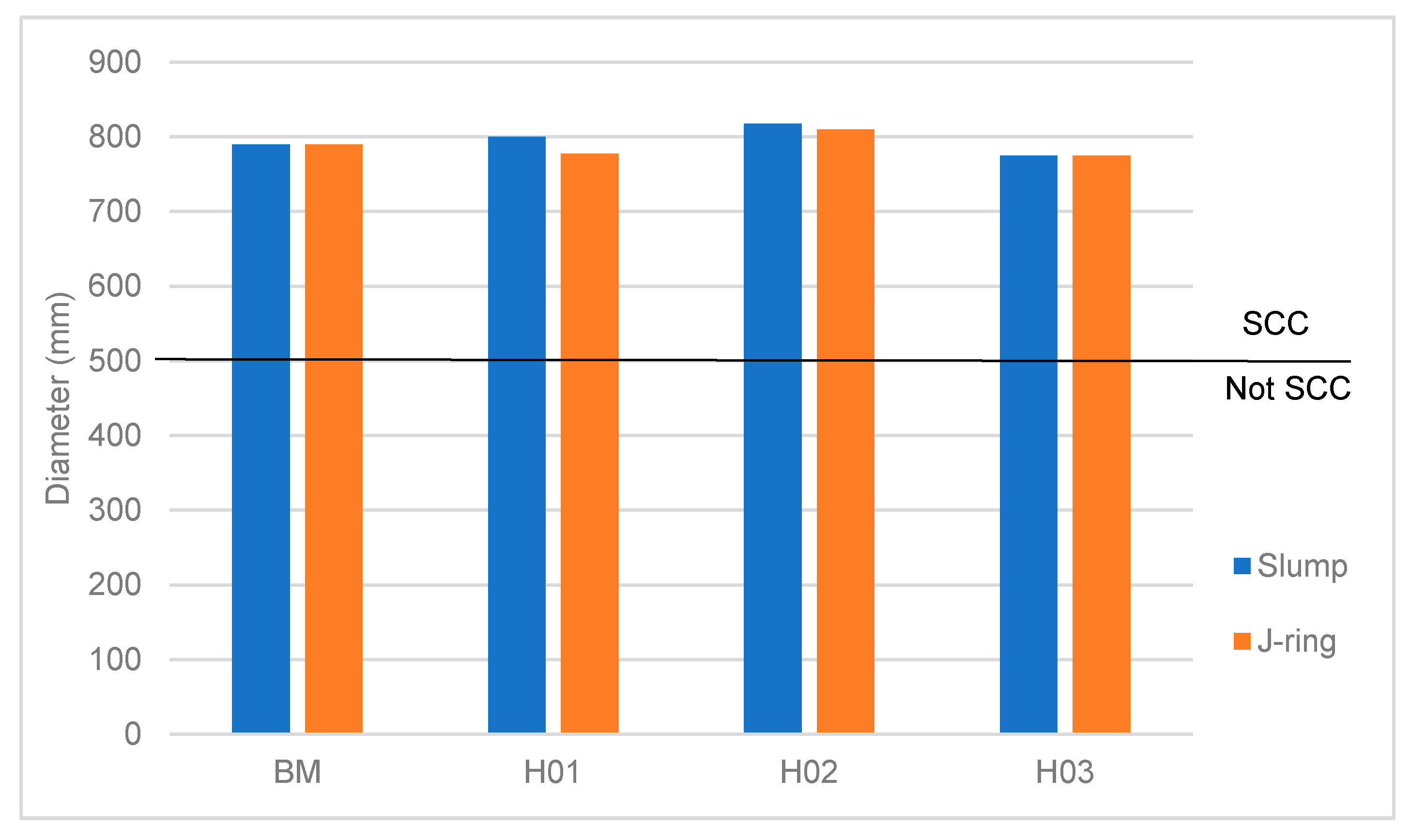
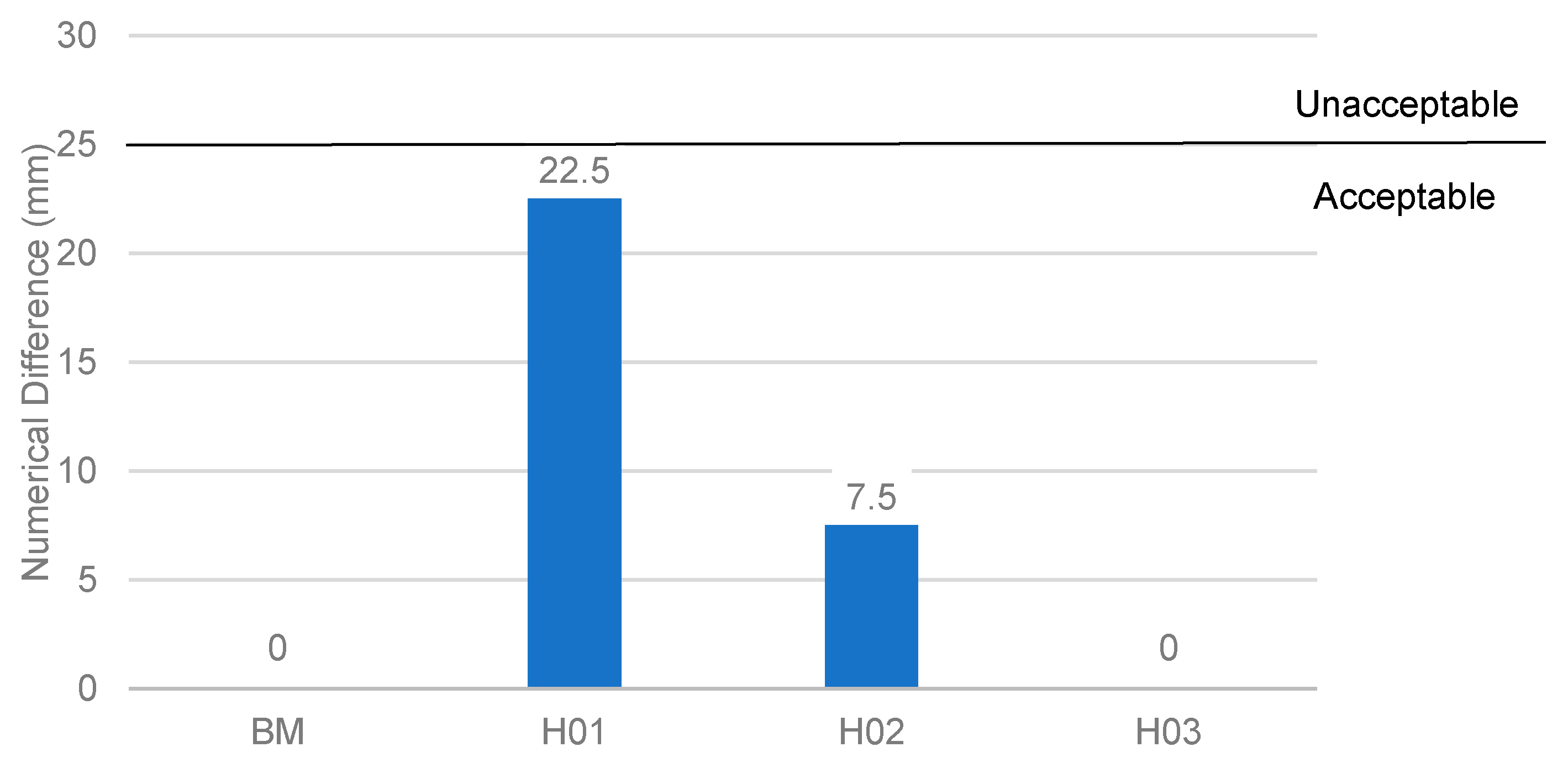

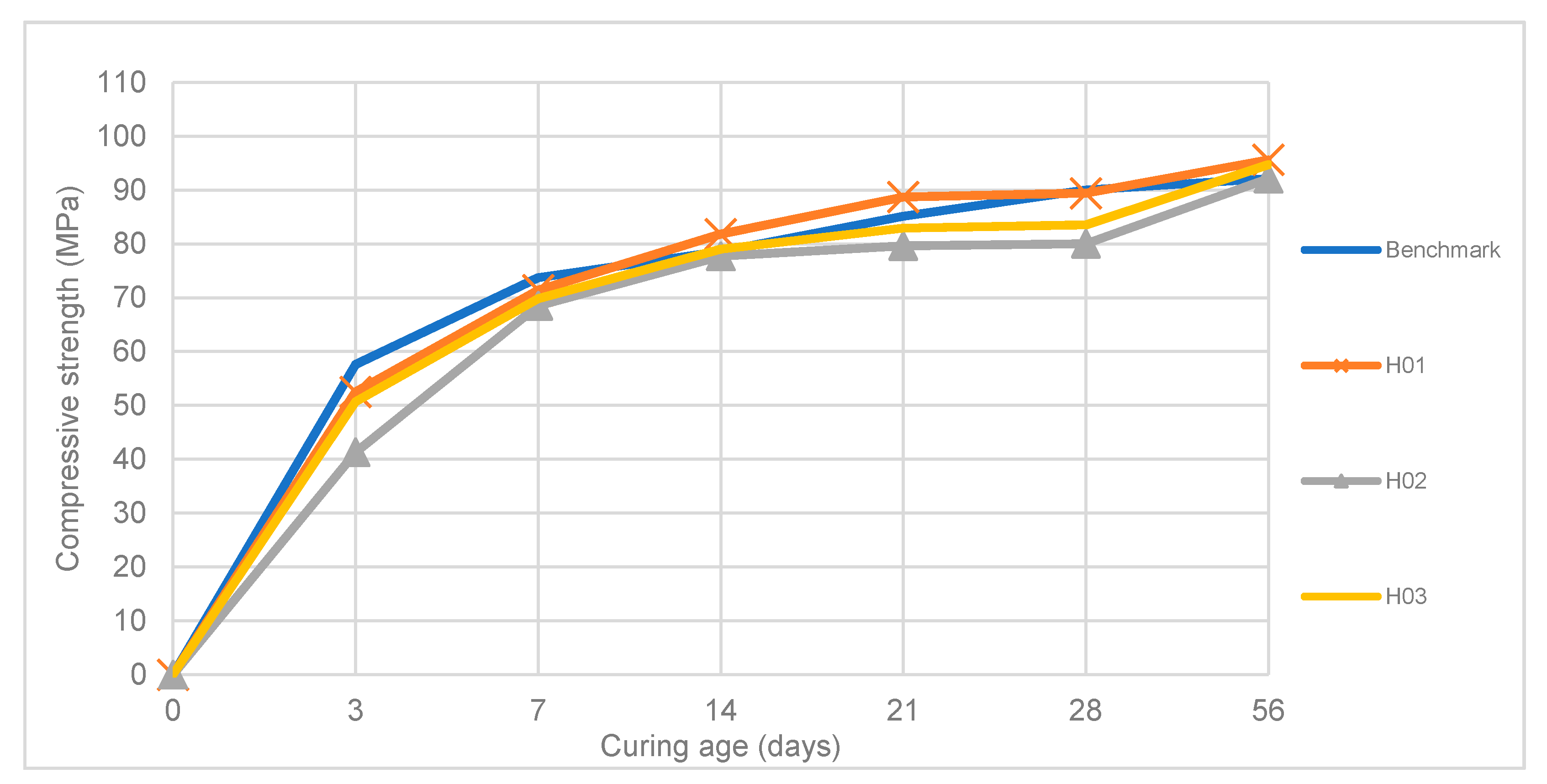
| Symbol | Property | Value |
|---|---|---|
| CWCA | ||
| ρ loose | Bulk Density – Loose (kg/m3) | 1295 |
| ρ compacted | Bulk Density – Compacted (kg/m3) | 1434 |
| Gs apparent | Specific Gravity – Apparent | 2.401 |
| Gs SSD | Specific Gravity – SSD | 2.421 |
| Gs bulk | Specific Gravity – Bulk | 2.450 |
| - | Water Absorption (%wt) | 0.84 |
| CWFA | ||
| - | Water Absorption (%wt) | 1.17 |
| CWP | ||
| - | Water Absorption (%wt) | 0.08 |
| F | Fineness (%) | 100 |
| Symbol | Property | Value |
|---|---|---|
| ρ loose | Bulk Density – Loose (kg/m3) | 1750 |
| ρ compacted | Bulk Density – Compacted (kg/m3) | 1902 |
| Gs apparent | Specific Gravity – Apparent | 3.502 |
| Gs SSD | Specific Gravity – SSD | 3.550 |
| Gs bulk | Specific Gravity – Bulk | 3.629 |
| - | Water Absorption (%wt) | 0.853 |
| Material | Quantity |
|---|---|
| Cement (kg/m3) | 550 |
| Sand (kg/m3) | 600 |
| Coarse aggregates – 9.5 mm (kg/m3) | 360 |
| Coarse aggregates – 4.75 mm (kg/m3) | 720 |
| Water (kg/m3) | 169 |
| Silica fume (kg/m3) | 40 |
| Fly ash (kg/m3) | 60 |
| SIKA® ViscoCrete®-5070 (l) | 2.2 |
| Water/cement ratio | 0.26 |
| Water/binder ratio | 0.32 |
| Replacement Material * | Hybrid mix 1 (H01) | Hybrid mix 2 (H02) | Hybrid mix 3 (H03) |
|---|---|---|---|
| CWCA (replacing 4.75 mm CA) | 0 | 10 | 0 |
| CWFA (replacing sand) | 10 | 0 | 0 |
| CWP (replacing cement) | 0 | 0 | 5 |
| EAFS (replacing 9.5 mm CA) | 5 | 10 | 5 |
© 2020 by the authors. Licensee MDPI, Basel, Switzerland. This article is an open access article distributed under the terms and conditions of the Creative Commons Attribution (CC BY) license (http://creativecommons.org/licenses/by/4.0/).
Share and Cite
Soleimani, S.M.; Alaqqad, A.R.; Jumaah, A.; Majeed, A. Examining the Effects of Introducing and Combining Electric-Arc Furnace Slag and Ceramic Waste in a Single Self-Consolidating, High-Strength Concrete Mix. Appl. Sci. 2020, 10, 4844. https://doi.org/10.3390/app10144844
Soleimani SM, Alaqqad AR, Jumaah A, Majeed A. Examining the Effects of Introducing and Combining Electric-Arc Furnace Slag and Ceramic Waste in a Single Self-Consolidating, High-Strength Concrete Mix. Applied Sciences. 2020; 10(14):4844. https://doi.org/10.3390/app10144844
Chicago/Turabian StyleSoleimani, Sayed Mohamad, Abdel Rahman Alaqqad, Adel Jumaah, and Abdulaziz Majeed. 2020. "Examining the Effects of Introducing and Combining Electric-Arc Furnace Slag and Ceramic Waste in a Single Self-Consolidating, High-Strength Concrete Mix" Applied Sciences 10, no. 14: 4844. https://doi.org/10.3390/app10144844
APA StyleSoleimani, S. M., Alaqqad, A. R., Jumaah, A., & Majeed, A. (2020). Examining the Effects of Introducing and Combining Electric-Arc Furnace Slag and Ceramic Waste in a Single Self-Consolidating, High-Strength Concrete Mix. Applied Sciences, 10(14), 4844. https://doi.org/10.3390/app10144844





